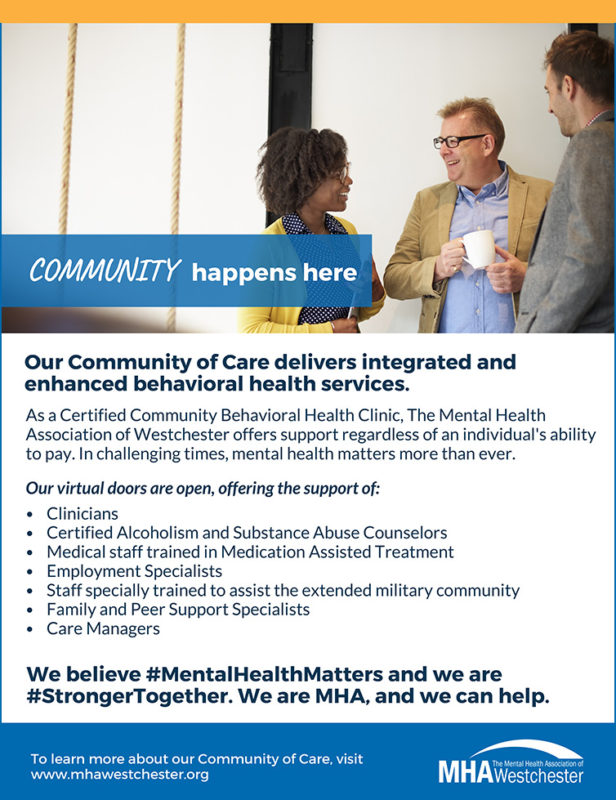There is no shortage of media attention to the mental health impact of the current COVID-19 pandemic. It is so important to raise awareness of this, in order to diminish the stigma, normalize the experience, and help give people the tools they need to navigate through these challenging and unprecedented times. We have a long road ahead of us in terms of emotional recovery from this, and that should not be underestimated. Many people will require the help of mental health professionals and this needs to be normalized and encouraged. However, it is also important to highlight and reinforce that the majority of individuals will actually demonstrate resilience through these times. Furthermore, we can also anticipate seeing good numbers of people experiencing lasting positive change, referred to as Post-Traumatic Growth. We know this because outcomes following trauma and adversity fall along a bell-shaped curve, with Post Traumatic Stress Disorder (PTSD) and other depressive/anxiety disorders at one end, Post-Traumatic Growth at the other extreme, and resilience across the middle. This does not mean, however, that responses during the trauma are predictive of the later outcome.

Jenna Velez, LCSW
While more than 50% of individuals will experience some trauma in their lifetime, only 7-8% of the population develops PTSD. This means the overwhelming of majority of those who experience a traumatic event will demonstrate resilience and return to their pre-trauma state of functioning. The majority of people enduring a traumatic or adverse event will experience at least some level of distress during and immediately after the event. This is expected and adaptive as the body enters a fight or flight state. The severity and longevity of the distress depends on many factors, including the cumulative effect of multiple traumas/adversity experienced in the past, emotional state prior to the trauma, meaningful impact of the event in multiple life domains, and amount of social support available. Conversely, there are factors that promote recovery and resilience following a trauma, including seeking out support (from social circles, professionals and/or support groups) and use of positive coping strategies.
This data is important, because it can help provide a framework for how to respond to the current situation. It is not an uncommon belief that the way to avoid post-traumatic stress is by avoiding traumatic experiences and extreme adversity, which of course is something that is largely outside of one’s control. Since we are currently in a global state of adversity (albeit more extreme for some than others) this belief can inadvertently lead to an expectation that a negative outcome is probable. We are likely to see an increase in overall numbers of people experiencing post-traumatic stress and other associated mental health conditions, because such a vast number of individuals are exposed to the trauma of COVID-19 simultaneously. However, we can expect that the percentages noted above will hold, meaning that the majority will still demonstrate resilience.
There is a phenomenon known as self-fulfilling prophecy, in which a person’s behaviors align with beliefs or expectations about outcomes and thereby elicit those very outcomes. Given this, it is vital that we share information that reflects what the data tells us. If you find yourself breaking down in tears, with lower frustration tolerance, experiencing difficulty with sleep or increased anxiety, the belief that you are headed for a negative outcome has the potential to actually worsen those symptoms. The knowledge that these are normal and expected reactions, that resilience is still the most likely outcome, and that there are things one can do to eventuate a positive outcome, has the potential to accelerate the process of recovery.
To promote resilience and prime people for post-traumatic growth, differences between the two concepts must be examined. Resilience is characterized by coming through an adverse experience without any lasting negative outcomes, maintaining relatively stable and healthy psychological and physical functioning. Life before and after the event are not drastically different. Remember, this is what most people will experience. Post-traumatic growth actually represents a lasting and positive change that is experienced after the trauma. While this is a realistic possibility for many, research suggests that it is an active process, with things we can do to elicit growth.
Post-traumatic growth involves creating a narrative that embraces a new way of viewing oneself and the world post trauma. This narrative is what allows for growth to be experienced. It’s important to remember that post-traumatic growth does not mean the experience of distress is eliminated. In fact, the experience of distress, and often intense distress, is necessary to experience post-traumatic growth. Without the experience of the distress, there is no impetus to shake the foundation of one’s existing belief systems and create a new narrative.
Post-traumatic growth is both a process and an outcome. It is not something that just happens and it does not occur in any particular timeframe. As increasing numbers of individuals seek out mental health treatment, it’s important to introduce the concept carefully in order to avoid the possibility of minimizing the pain and distress that a person is experiencing. People are experts at their own experiences, and the process of rebuilding a narrative can only be done by the individual. Attempting to create a potential narrative for someone else is not likely to be helpful and could actually be harmful. Likewise, conveying the message that a traumatic experience can lead to growth and opportunity cannot be confused with the damaging message that an individual can or should put on rose-colored glasses. The process involves feeling distress very deeply, while holding onto the belief that it can be the doorway to something meaningful. If one believes that the most likely outcome from their situation is growth and opportunity, it is more likely they will own that and start the process of making meaning, but without the unnecessary pressure to not feel what they are truly and validly feeling.
The Mental Health Association of Westchester (MHA) embraces the statements that Hope, Caring, Community, Healing and Recovery Happen Here. Our Certified Community Behavioral Health Clinic is built on the concept that a community of care supporting multiple areas of a person’s life is vital to well-being. The integration of peer support services into clinical services has been essential to fostering hope. Through sharing of one’s experience with mental health treatment and recovery, it conveys the message that this is possible for others, thereby priming individuals to start the process of making meaning in their own circumstances.
The question left to be answered is this: How do we encourage growth amidst this pandemic, while also holding space for the loss, pain and distress? The answer lies in our ability to embrace the paradoxes. If PTSD and post-traumatic growth can co-exist, then so can grief and gratitude, vulnerability and strength, loss and gain. We need to find ways to allow our narratives to take root. We need to keep talking about what’s hard and what we’re learning, sharing that in ways that opens the door for others to do the same. We can help people identify the risk factors for negative outcomes while sharing the tools for promoting resilience, including seeking support. If we see an increase in demand for mental health services over the next few months, we can embrace the paradox there as well. More suffering but also more growth.







